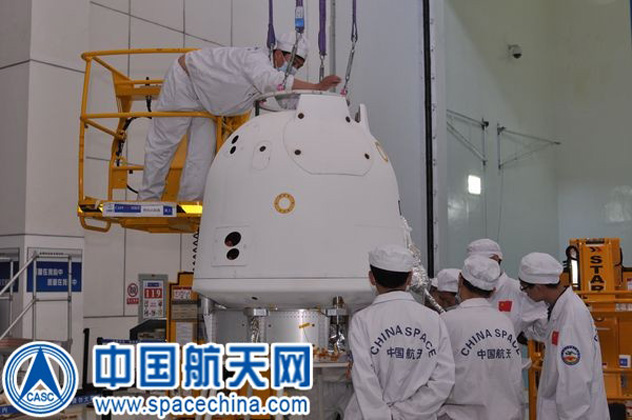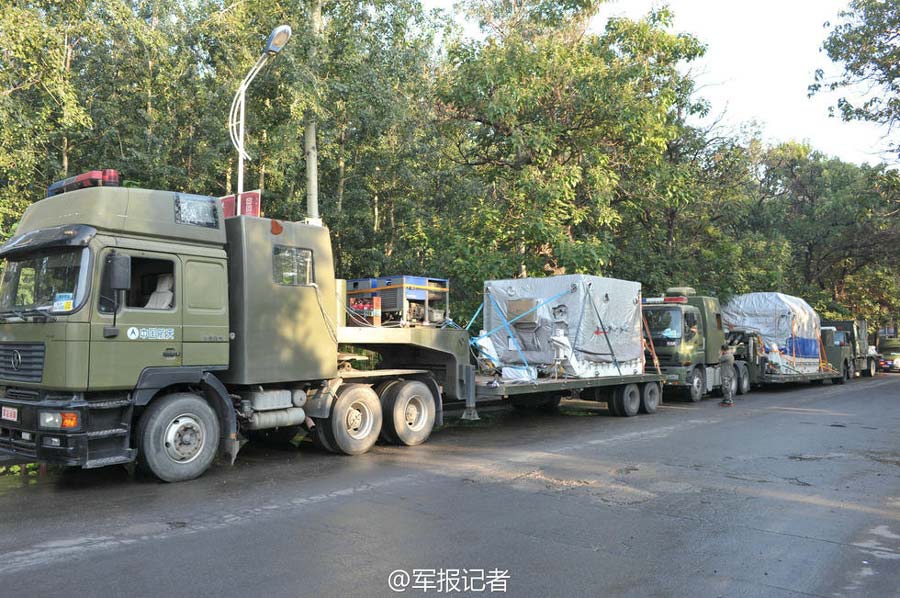
China to Launch Recoverable Moon Orbiter Prototype This Year

China's space program has set its sights on an ambitious feat of lunar exploration: robotically landing a probe on the moon and returning samples of the lunar surface back to Earth.
To accomplish that, the country plans to launch a lunar "test orbiter" by year's end with the intention of laying the foundation for China's Chang'e 5 lunar sample-return mission in 2017.
The experimental recoverable moon orbiter has arrived at the Xichang Satellite Launch Center in the southern province of Sichuan for its planned launch. The mission represents China's first attempt at returning a lunar probe to Earth, as noted in an Aug. 10 statement by China's State Administration of Science, Technology, and Industry for National Defense (SASTIND). [Most Amazing Moon Missions of All Time]

High-speed re-entry
The test orbiter mission involves a high-speed re-entry into the Earth's atmosphere as a precursor checkout for the Chang'e 5 sample-return mission. A specially designed re-entry capsule will return from the vicinity of the moon into the Earth's atmosphere, take the heat, and then land.
The Chang'e 4 moon orbiter is the backup for Chang'e 3 mission, which delivered China's first lander and rover on the lunar surface in 2013, according to China news agencies, but adapted to verify the technologies needed for the Chang'e 5 mission.

According to China's CCTV, the soon-to-be-launched probe will be placed into lunar orbit. Tests would be carried out there, with the vehicle blasting out of lunar orbit and returning to Earth.
There was early speculation that this test vehicle might fly a circumlunar trajectory, rounding the moon, then hurtle the hardware Earthward to carry out the high-speed appraisal of the return capsule.
Get the Space.com Newsletter
Breaking space news, the latest updates on rocket launches, skywatching events and more!
But according to China's Xinhua news agency, the plan is for the orbiter to be launched into lunar orbit and return to Earth at an escape velocity of 11.2 kilometers per second.
Technological breakthroughs
The more challenging Chang'e 5 mission in 2017 involves technological breakthroughs, according to Chinese space officials, in sampling encapsulation, lunar surface takeoff, rendezvous and docking in lunar orbit, as well as high-speed Earth re-entry.'
China launched the Chang'e 3 lunar lander and its Yutu moon rover in late 2013.
It followed the success of the Chang'e 1 and Chang'e 2 moon orbiter missions in 2007 and 2010.
"China started late in the space race. We never had astronauts in the lunar missions. But we have good technology for manned space missions. So after we are able to have probes return to Earth, we'll study and move to possible manned lunar missions," Ye Peijian, a China Academy of Space Technology senior adviser, told CCTV.
Leonard David has been reporting on the space industry for more than five decades. He is former director of research for the National Commission on Space and is co-author of Buzz Aldrin's 2013 book "Mission to Mars – My Vision for Space Exploration" published by National Geographic. Follow us @Spacedotcom, Facebook and Google+. Original article on Space.com.
Join our Space Forums to keep talking space on the latest missions, night sky and more! And if you have a news tip, correction or comment, let us know at: community@space.com.

Leonard David is an award-winning space journalist who has been reporting on space activities for more than 50 years. Currently writing as Space.com's Space Insider Columnist among his other projects, Leonard has authored numerous books on space exploration, Mars missions and more, with his latest being "Moon Rush: The New Space Race" published in 2019 by National Geographic. He also wrote "Mars: Our Future on the Red Planet" released in 2016 by National Geographic. Leonard has served as a correspondent for SpaceNews, Scientific American and Aerospace America for the AIAA. He has received many awards, including the first Ordway Award for Sustained Excellence in Spaceflight History in 2015 at the AAS Wernher von Braun Memorial Symposium. You can find out Leonard's latest project at his website and on Twitter.










